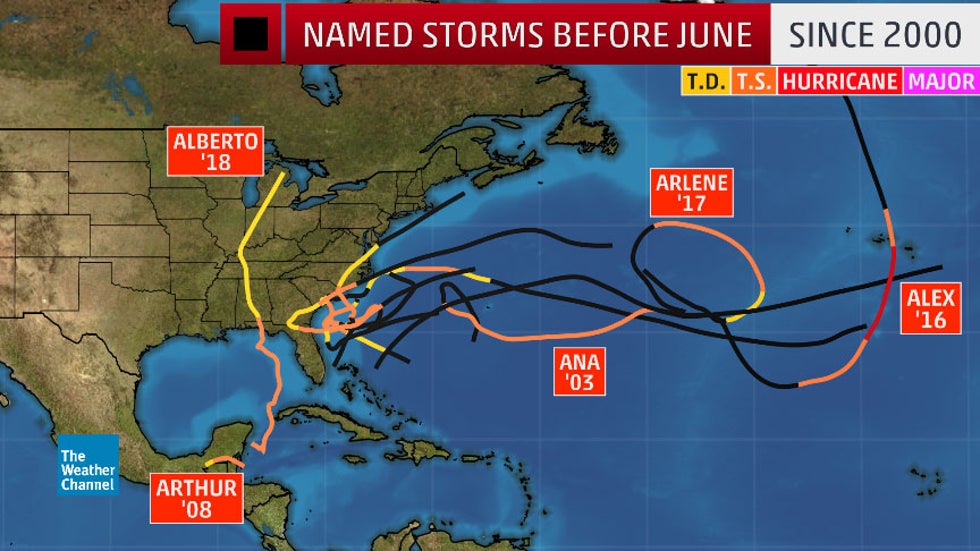Four different groups that forecast the number of tropical storms in the Atlantic Basin have predicted active seasons for this year, based on the lack of an El Nino and unusually warm water in the Atlantic and Gulf of Mexico. The Eastern Pacific Ocean already had their first official Tropical Depression of the year, ahead of the official start of the season there. Some scientists have also noted the the number of storms that occur in the Atlantic Ocean prior to the official June 1 start date of the season has increased in the past decade, which could lead to a longer season overall if this year follows that pattern (so far no signs of anything stirring, fortunately), although it may be related to our ability to see hurricanes better in the current satellite era. You can read more about that at https://firstalerthurricane.com/75-2/. According to CBS News, Colorado State University is projecting 16 named storms this year, AccuWeather is projecting 14 to 18, the Weather Channel is forecasting 18, Penn State University is predicting 20, and the University of Arizona said 19, compared to an average of 12.
If any of the hurricanes that might develops this season hits the US Coast, we can expect extra difficulties in dealing with the fall-out from the storms this year because of the lingering effects of dealing with the pandemic, which has sucked up a lot of emergency resources and altered supply chains for many items.So you might want to keep that in mind when preparing for this year’s hurricane season. You can read more at https://www.cbsnews.com/news/hurricane-season-2020-active-strain-emergency-response-coronavirus-pandemic/.
